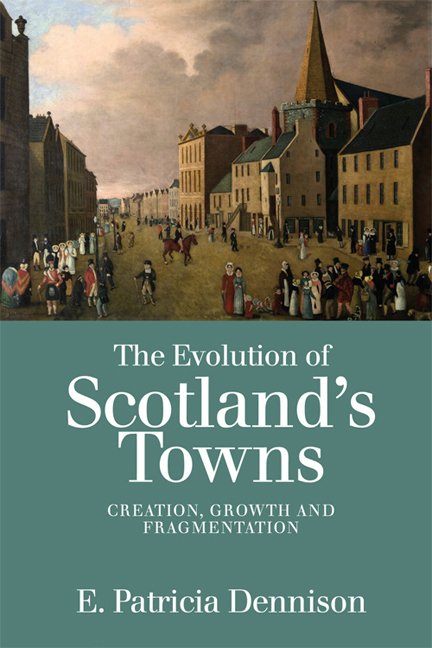Book contents
- Frontmatter
- Contents
- List of Figures
- Acknowledgements
- Image Credits
- List of Abbreviations
- Introduction
- 1 Medieval Towns
- 2 Daily Life in the Middle Ages
- 3 Medieval Faith and the Church
- 4 Encroachment on Burgh Society, 1550–1750
- 5 Man-made and Natural Disasters, 1550–1750
- 6 The Birth of Urban Scotland
- 7 The Victorian Town
- 8 The Twentieth Century
- Post-script: Footprints to Fragmentation
- Appendix: Population Statistics – A Select List
- Bibliography
- Index
3 - Medieval Faith and the Church
Published online by Cambridge University Press: 11 November 2020
- Frontmatter
- Contents
- List of Figures
- Acknowledgements
- Image Credits
- List of Abbreviations
- Introduction
- 1 Medieval Towns
- 2 Daily Life in the Middle Ages
- 3 Medieval Faith and the Church
- 4 Encroachment on Burgh Society, 1550–1750
- 5 Man-made and Natural Disasters, 1550–1750
- 6 The Birth of Urban Scotland
- 7 The Victorian Town
- 8 The Twentieth Century
- Post-script: Footprints to Fragmentation
- Appendix: Population Statistics – A Select List
- Bibliography
- Index
Summary
Urban society and the Church were so closely entwined as to be almost inseparable. The Church's influence dominated the lives of everyone, from birth and baptism through handfasting (an agreement to wed) and marriage, to death and burial. The routine of life, the daily and annual cycles, all revolved around the Church, its teachings and beliefs, its good works and its calendar.
The Church routine
Urban life was regulated by the Church. The liturgical cycle timetabled the yearly secular life of the town, with the meetings of the burgh head courts coinciding with Michaelmas, Christmas and Easter (see p. 34). Days for relaxation were determined by the multitude of holy or saints’ days. These were days for veneration of Christ and the saints, with splendid street processions. They afforded an opportunity for the elite to be seen parading through the town in order of status: the provost or alderman nearest to the statue of the saint or holy relic and the clergy, followed by the town hierarchy – burgh council, gild merchant and the crafts, holding their banners aloft, in order of importance. But these occasions were also days of rest from routine: religious processions and plays brought not only the opportunity for reverence but also time for a bit of fun and merry-making. A list in the Dundee burgh records of pertinents loaned by Edinburgh to Dundee to perform its Corpus Christi procession gives a flavour of what must have been a serious but happy occasion:
sixte of crownis, six pair of angel reynis [wings], three myteris, cristis cott [coat] of lethyr with the hoses and glufis, cristis hed, thirtie one suerdis, thre lang corsis of tre [wood], sanc Thomas sper, a cors til sanc blasis, sanc johnis coit, a credil and thre barnis maid of clath, twentie hedis of hayr, the four evengellistis, sanc katernis wheil … sanc androwis cros, a saw, a ax, a rassour, a guly [large] knyff, a worm [serpent] of tre, the haly lam of tre, sanc barbaras castel, abraamis hat and thre hedis of hayr.
- Type
- Chapter
- Information
- The Evolution of Scotland's TownsCreation, Growth and Fragmentation, pp. 77 - 109Publisher: Edinburgh University PressPrint publication year: 2017

